Resource 2: Local traditions
![]() Background information / subject knowledge for teacher
Background information / subject knowledge for teacher
The sacred Batá drums
Batá drums are a family of three double-headed tapered cylinders, with a slight hourglass shape. With varying sizes that produce differences in pitch, they are named according to size: iyá, the larger drum, considered the mother; itótele, the medium-sized drum, and okónkolo, the smaller or baby drum. They are carved out of solid wood. The skins are of male goat or deer. The small head is called the chacha and the large is the enu, or mouth. A wax-like substance called ida, or fardela, is used on the larger heads of the iyá and itótele, changing the tonality to produce a duller sound. There are usually two belts around the iyá, near the heads, with bells attached to them. These are called chaguoro. The drums have embroidered skirts or aprons and decorated strips of cloth as well.
Used almost entirely for religious or semi-religious events in Yorùbáland, in Nigeria, the batá are used for worship of Shangó, the leader of Oyó and God of Thunder and Lightning, to produce what believers consider is celestial music. They are also used for ancestor (egungun) worship with masked dancers called agbegijo, who portray humorous and serious as well as ancient and modern characters.
The batá drums can speak. They can be used to speak the Yorùbá language, and have been used traditionally to recite prayers, religious poetry, greetings, announcements, praises for leaders, and even jokes or teasing. The Yorùbá language, the mother tongue of over 10 million people, is a tonal language, like many African languages. Yorùbá speakers use three basic tones, or pitches, and glide between them, as an essential part of how words are pronounced. This is how the hourglass-shaped ‘talking drums’ (called dundun in Yorùbá) are able to speak Yorùbá praises and sayings. This is also how batá and other drums can talk. | 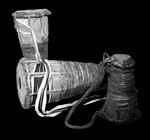 | |
Sacred batá drums in Yorùbá culture have religious rituals surrounding their construction: who can touch them, how to prepare to play them, and how to care for them. These sacred batá are treated as living creatures with names, care and feelings, with various rules for their use. An uninitiated person may not touch them and they may not touch the ground.
The spiritual force and mystery placed within the drum when it is made sacred, or consecrated, is called añá or ayán. Añá is also referred to as an orisha, or deity. A drummer may be initiated into añá through certain religious rituals practised mostly in Nigeria, and receives the spiritual force needed to play the drums correctly to bring the orishas down to a ceremony to possess the devotees.
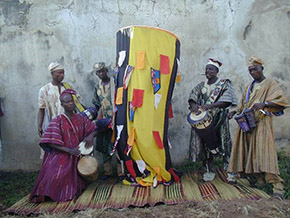 | |
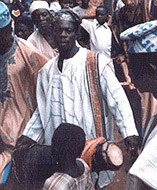 | Omele batá drums from Nigeria 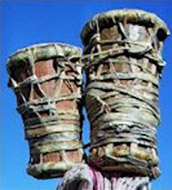 |
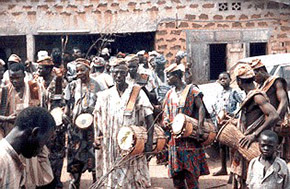 | |
Adapted from: http://www.batadrums.com | |
Resource 1: Stories of the Venda drum



